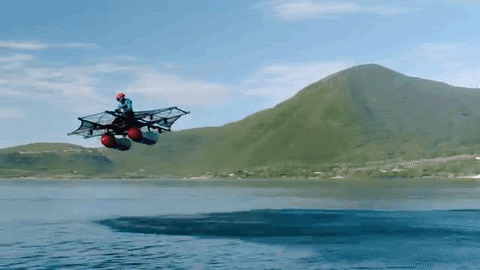Our team is pleased to feature this courtesy of the team at @Devex as we assess the state of our World. What especially caught our eye was the commitment to clean up our Oceans. It is also gratifying to note what was just reported and underscored by the team at +Global Citizen noted:


As our team embraces such developments, we continue to be concerned about the impending cuts at the State Department--some say as high as 31% as the Secretary of State has launched a survey as it prepares for the major cuts--and as the White House has just come out to note that the State Department is responsible for vacancies as key management positions within the Department remain unfilled.
| May 4, 2017 | ||
THIS WEEK'S MUST-READ DEVELOPMENT STORIES | ||
 |
By Michael Igoe
| |
Business and government leaders look to Africa's future, U.S. development professionals breathe a sigh of relief, and a Norwegian oil magnate launches a garbage-eating research vessel. This week in development news.
World Economic Forum on Africa kicked off Wednesday with tough assessments of the continent's leaders for failing to tackle avoidable problems such as famine and a call to action to address rising inequality and systemic poverty. South African politician Lindiwe Mazibuko blamed "a leadership vacuum" for allowing "famine and terrorism and inequality" to persist. On Thursday, Zimbabwe President Robert Mugabe made a last minute appearance to discuss fragile states and referred to his country as "the most developed country on the continent after South Africa." A few seats away on the panel, Winnie Byanyima, executive director of Oxfam International, called outleaders who have "radio and guns but no legitimacy." Policy experts and government leaders discussed investment in agribusinesses and climate adaptation, leveraging private capital to improve infrastructure, and "future-proofing" the continent through training programs for youth.Regional integration and Intra-African trade also took center stage. NEPAD, the technical body of the African Union, emphasized their focus on creating regional transport corridors and reversing the perception that infrastructure investments in Africa are too risky. U.S. lawmakers tentatively agreed to a budget deal to fund the U.S. government for the rest of the fiscal year and avoid a federal government shutdown. The massive bill — which weighs in at over 1,500 pages and provides more than $1 trillion in funding — marks adecisive break from budget proposals put forward by the Trump administration, which has suggested drastic cuts to U.S. foreign aid programs. If Congress passes this budget in a vote expected to come this week, they will provide $4.6 billion more in funding for international affairs than was enacted in the 2016 fiscal year. The U.S. development community has applauded Congress's bipartisan defense of foreign aid programs, and many hope the budget bill is a signal that Congress, not the White House, is the seat of power when it comes to determining federal spending priorities. The Asian Development Bank kicked off its 50th annual meeting in Yokohama, Japan, with the launch of "Banking on the Future of Asia and the Pacific: 50 Years of the Asian Development Bank," a 500+ page book that gives readers a glimpse into the bank's history and insights on the events and decisions that shaped the ADB of today. In an interview with Devex President and Editor-in-Chief Raj Kumar, ADB President Takehiko Nakao talked about the policies and reforms the bank undertook to weather crises and better meet the needs of its member countries throughout the years. Nakao also outlines his plans for the future, including doubling the bank's climate financing, expanding its work in health and cutting unnecessary procedures to speed up bank processes. "I want to continue to adjust to the reality of Asia and I hope that there remain new challenges for ADB so that we can continue to make our contributions," he said. The bank is currently working to streamline its processes, rationalize its systems and deliver more value for money, he said in his opening press conference. The Global Fund to Fight HIV, Tuberculosis and Malaria's board of directors appointed Aida Kurtović as its new chair and Ambassador John Simon as its new vice-chair at a board meeting Wednesday in Rwanda. Kurtović, who is from Bosnia and Herzegovina, is executive director of Partnerships in Health, a Sarajevo-based organization that works on building institutional capacity for health. Simon, an American, has held numerous positions in the U.S. government, including advising on the creation of development initiatives, including the Millennium Challenge Corporation and PEPFAR, the AIDS initiative. Simon is a founding partner at Impact Capital, an impact investing firm. "The Global Fund can take a leadership role in innovative finance," Simon said in a Global Fund statement. Mark Dybul, the Global Fund's executive director, will step down at the end of May. In March, the board decided to shelve their selection process for a new director until new candidates could be identified. Norwegian billionaire Kjell Inge Roekke, a small-town fisherman turned oil magnate, has pledged to give away most of his fortune, and part of it will finance the construction of a research vessel that can remove 5 tons of plastic waste from the ocean every day. The conservation organization World Wildlife Fund will manage the ship and its research and conservation activities with complete independence from Roekke, who still owns an oil business, Time reported. | ||



















